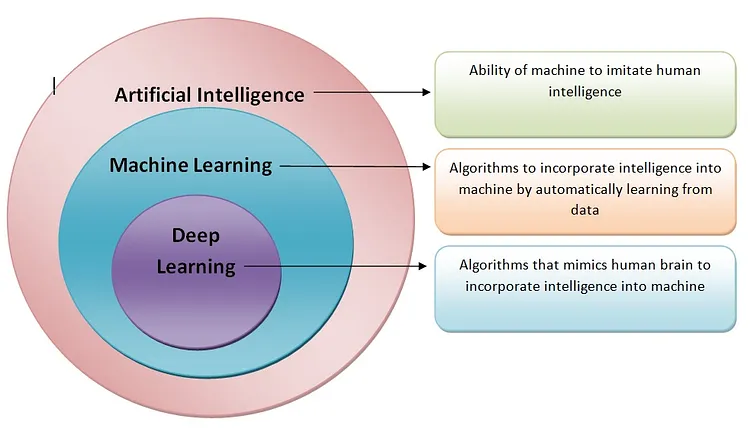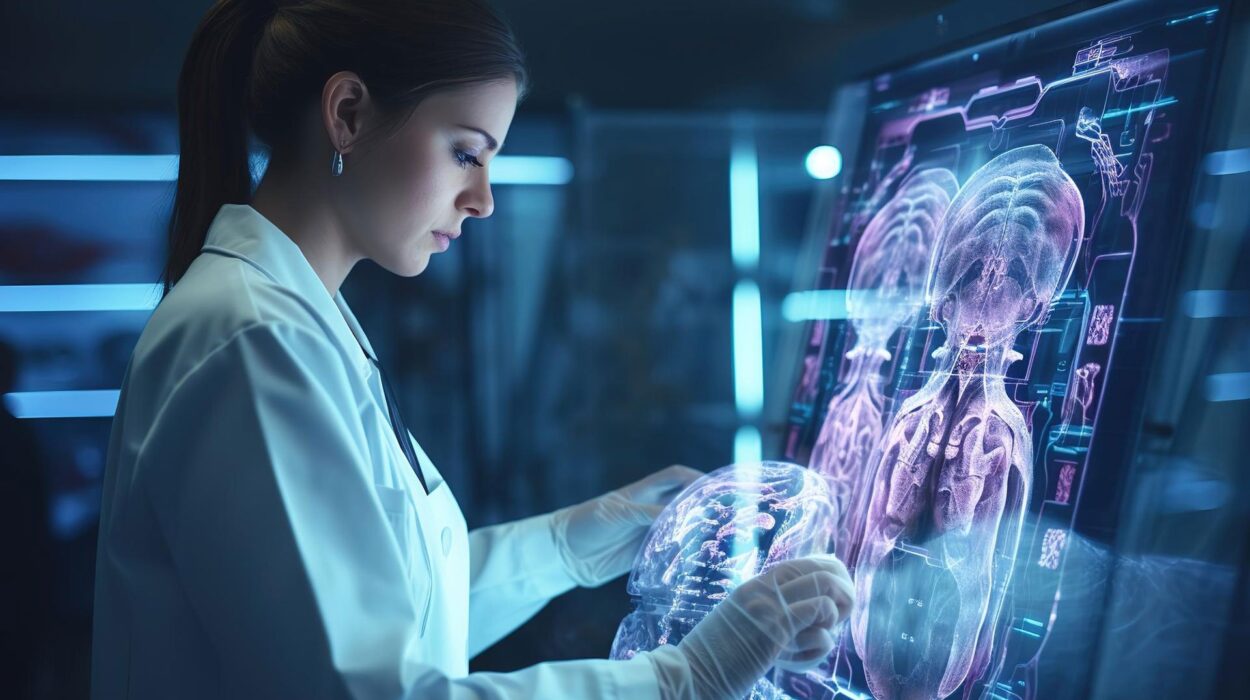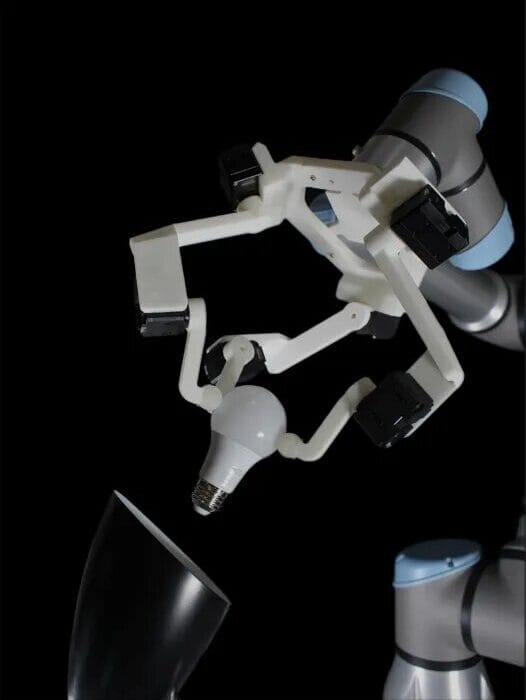We are living in an extraordinary time — an era when machines can see, speak, listen, drive cars, compose music, and even dream. Every day, headlines proclaim new breakthroughs: AI defeats a chess grandmaster, machine learning diagnoses cancer better than doctors, deep learning powers cars to drive themselves. Yet behind these dazzling achievements lies a web of confusion about what these terms truly mean.
Artificial Intelligence. Machine Learning. Deep Learning. These buzzwords dominate conversations in technology, business, healthcare, entertainment, and even art. But what exactly are they? Are they synonyms? Different branches of the same tree? Separate worlds altogether?
This article dives deep into the fascinating world of intelligent machines, unraveling the true meanings of AI, machine learning, and deep learning. You’ll learn how they connect, how they differ, and how each is shaping the future in its own remarkable way.
The Origins of Artificial Intelligence
To understand the differences between AI, machine learning, and deep learning, we need to journey back to the birth of the field: the dream of artificial intelligence itself.
The term “artificial intelligence” was coined in 1956 at the Dartmouth Conference, a gathering of brilliant minds like John McCarthy, Marvin Minsky, and Claude Shannon. Their vision was bold: to create machines that could replicate human intelligence. They imagined computers capable of reasoning, problem-solving, learning, and even exhibiting creativity.
Early AI projects were ambitious but limited by the technology of the time. Researchers built systems that could solve puzzles, play simple games like checkers, and prove mathematical theorems. These “symbolic AI” systems worked by hand-coding rules and logic. They were impressive, but brittle — they struggled outside the narrow domains they were programmed for.
Nevertheless, AI was born as a field aiming to create intelligent agents — systems that perceive their environment and take actions to achieve specific goals.
Key Concept:
Artificial Intelligence is the broad science of mimicking human abilities. It encompasses everything from rule-based systems to robots to complex neural networks.
What Is Machine Learning?
In the 1980s and 1990s, a critical realization shifted the course of AI research: Instead of programming machines explicitly, why not let them learn from data?
This idea — machine learning — changed everything.
Machine learning is a subset of AI focused on building systems that can learn and improve from experience without being directly programmed. Rather than telling a machine every step it should take, you provide it with examples and let it figure out the patterns on its own.
At its core, machine learning answers questions like:
- How can we build systems that automatically improve with experience?
- Can a computer recognize a cat in a photo after seeing thousands of labeled images?
- Can a program predict tomorrow’s stock prices based on historical trends?
Machine learning systems typically involve three steps:
- Training on a dataset (like a huge collection of emails labeled as spam or not spam).
- Learning the underlying patterns (finding common features among spam emails).
- Making predictions on new, unseen data (flagging a suspicious new email as spam).
This paradigm shift moved AI from brittle, hand-coded rules to flexible, adaptive learning systems.
Key Concept:
Machine Learning is a subset of AI that gives machines the ability to learn from data without being explicitly programmed.
Types of Machine Learning
Not all machine learning is the same. There are three major categories, each suited for different kinds of problems:
Supervised Learning
In supervised learning, the machine is given labeled data — examples that include both input and the correct output.
Imagine teaching a child what a dog looks like by showing thousands of pictures of dogs, each labeled “dog.” Over time, the child (or machine) learns to recognize the features that distinguish dogs from cats, birds, and horses.
Supervised learning powers:
- Email spam filters
- Image recognition systems
- Credit card fraud detection
Unsupervised Learning
In unsupervised learning, the machine receives input data without labels and must find hidden patterns on its own.
This is like giving someone a pile of photos and asking them to group similar ones together without telling them what’s in each photo.
Unsupervised learning is used for:
- Customer segmentation in marketing
- Anomaly detection in cybersecurity
- Discovering hidden patterns in genetic data
Reinforcement Learning
In reinforcement learning, an agent learns by interacting with an environment and receiving feedback in the form of rewards or punishments.
It’s how AlphaGo learned to defeat human champions at Go, and how robots learn to walk and run.
Reinforcement learning mimics how humans and animals learn — through trial and error, adjusting behavior based on outcomes.
Summary:
Machine Learning can be supervised (with labels), unsupervised (without labels), or reinforcement-based (learning by reward).
What Is Deep Learning?
If machine learning is the art of teaching machines to learn from data, deep learning is the art of enabling machines to learn complex patterns through layered architectures.
Deep learning is a subset of machine learning inspired by the structure of the human brain — specifically, networks of neurons.
The “deep” in deep learning refers to the use of multiple layers of neurons in artificial neural networks. Each layer extracts higher-level features from the input data.
For example, in image recognition:
- The first layer might detect edges.
- The next layer might detect simple shapes.
- The next might detect parts of objects.
- And deeper layers recognize entire objects like “dog” or “car.”
These deep networks can automatically learn representations of data, eliminating the need for manual feature extraction — a major breakthrough.
Deep learning powers:
- Voice assistants like Siri and Alexa
- Self-driving cars’ object detection
- Language translation systems
- Deepfake videos
- Medical imaging diagnostics
Key Concept:
Deep Learning is a subset of Machine Learning that uses multi-layered neural networks to automatically discover representations from data.
How They Relate to Each Other
The relationship between AI, machine learning, and deep learning is often described visually:
- Artificial Intelligence is the big circle: the broader goal of intelligent machines.
- Inside AI is Machine Learning: a subset focused on learning from data.
- Inside Machine Learning is Deep Learning: a subset that uses deep neural networks.
Think of AI as the universe, machine learning as a galaxy within it, and deep learning as a star system inside that galaxy.
In short:
- All deep learning is machine learning.
- All machine learning is AI.
- But not all AI is machine learning or deep learning.
For example, a chess-playing AI could be rule-based (if-then statements) without any learning. Or a robot vacuum could use simple sensors and rules without sophisticated machine learning.
Why Deep Learning Exploded Recently
Deep learning existed for decades, but it exploded in the 2010s. Why?
Three key factors converged:
- Big Data: The rise of the internet, social media, sensors, and digitization created massive datasets.
- Computational Power: GPUs (originally built for gaming) provided the parallel processing needed for training deep networks.
- Algorithmic Improvements: New techniques like convolutional neural networks (CNNs) and recurrent neural networks (RNNs) boosted deep learning’s capabilities.
In 2012, deep learning stunned the world when a deep neural network smashed previous records in the ImageNet competition, recognizing images with unprecedented accuracy. That breakthrough sparked a wave of research, investment, and excitement that continues today.
Now, deep learning drives progress in fields as diverse as:
- Autonomous vehicles
- Personalized medicine
- Financial forecasting
- Climate modeling
- Creative arts
Practical Examples: Comparing AI, ML, and DL
To make the differences more tangible, let’s walk through some examples:
AI Example: A Rule-Based Chatbot
A simple customer service chatbot that answers FAQs by looking up keywords in a database is artificial intelligence — but not machine learning. It’s using pre-programmed logic to simulate human-like conversation.
ML Example: Spam Detection
A spam filter that improves over time by learning from examples of spam and non-spam emails uses machine learning. It wasn’t explicitly told the rules of spam; it learned them from data.
DL Example: Self-Driving Car Vision
A self-driving car that uses a deep neural network to detect pedestrians, other cars, and road signs is using deep learning. The system learned to recognize these objects through training on massive datasets of labeled images.
Bottom Line:
The sophistication of the system usually corresponds to where it falls: AI (broad), ML (learning patterns), DL (deep architectures).
Challenges and Limitations
Despite the dazzling successes, each approach has limitations.
- AI (in general) struggles with truly human-like reasoning, creativity, and common sense.
- Machine Learning systems require massive amounts of labeled data, and they can overfit (memorize instead of generalize).
- Deep Learning demands enormous computational resources and often operates as a “black box” — making it hard to explain decisions.
Additionally, ethical challenges loom large:
- Bias in training data leads to biased AI.
- Lack of transparency raises accountability questions.
- Automation threatens to displace millions of jobs.
Understanding these challenges is crucial as we move deeper into the age of intelligent machines.
The Future of AI, Machine Learning, and Deep Learning
The future of these fields is dazzling — and daunting.
AI is expected to move toward Artificial General Intelligence (AGI) — machines that can reason, plan, and adapt across multiple domains, much like humans. Achieving AGI could unlock unprecedented benefits — but also pose existential risks.
Machine learning will likely become even more automated, leading to AutoML systems that design better algorithms than humans can.
Deep learning will evolve into more efficient, explainable, and energy-conscious forms. Researchers are exploring neuromorphic computing, brain-inspired architectures, and new models like transformers that have already revolutionized natural language processing.
Ultimately, the boundaries between AI, machine learning, and deep learning may blur further as these technologies co-evolve, intertwine, and reshape our world.
Conclusion: Three Pillars of the New World
Artificial Intelligence, Machine Learning, and Deep Learning are not just technical buzzwords — they are the pillars of a new world. They represent our growing ability to build machines that learn, adapt, and sometimes surprise us.
Understanding the differences — and the connections — between them isn’t just academic. It’s essential for anyone who wants to navigate the future, whether as a technologist, entrepreneur, policymaker, or citizen.
AI is the dream.
Machine learning is the method.
Deep learning is the rocket ship.
Together, they are propelling us into the unknown — a future where the line between mind and machine grows ever thinner, and the possibilities are limited only by our imagination.






